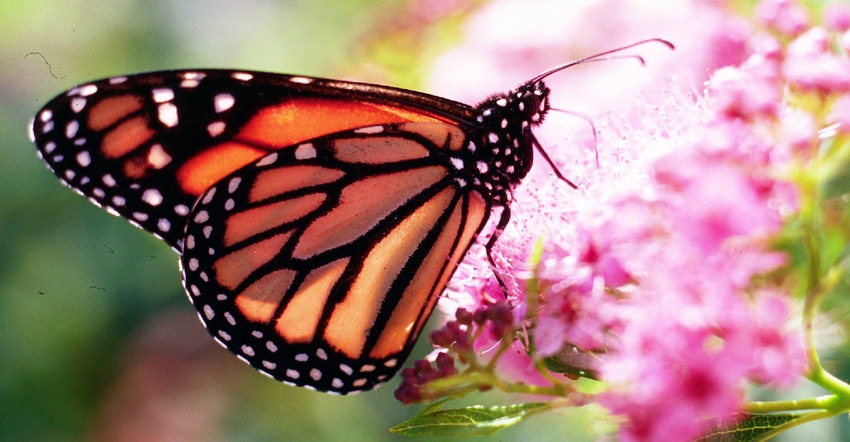June 24, 2019

The Monarch Effect, an interactive, virtual reality experience, debuted last week. Created by Environmental Defense Fund and the National Corn Growers Association, The Monarch Effect immerses viewers in monarch butterflies’ 3,000-mile migration through North America.
The journey begins in the oyamel fir forests of central Mexico, where tens of millions of monarchs spend the winter. Viewers then join consecutive generations of monarchs as they fly north into the American heartland looking for the milkweed and wildflower habitat they need to survive.
“Being surrounded by millions of monarchs during our shoot in Mexico was one of the most surreal and magical moments of my life,” said Eric Holst, associate vice president for working lands at EDF. “This technology transports people there, letting them feel that same sense of awe.”
Monarch populations have plummeted 90% over the past two decades due to habitat loss, pesticide use, and extreme and variable weather. The species is a bellwether for the overall health of ecosystems and working lands.
Now, farmers, ranchers and entire communities are stepping up to ensure this beloved butterfly recovers and thrives for generations to come.
“What is good for monarchs is also good for farmers. By adding pollinator habitat to existing conservation practices, producers can simultaneously increase biodiversity, soil health, water quality — and ultimately, overall operational resilience,” Holst said.
“Monarch butterflies migrate right through the Corn Belt. Farmers along that migration path, including those featured in The Monarch Effect, prove that pollinator habitat can be integrated into productive operations,” said Nathan Fields, vice president of production and sustainability at NCGA.
Monarchs, and the viewers accompanying them, make two pit stops on the migration north. Amy and George Greer, sixth-generation cattle ranchers, greet them at Winters-Wall Ranch in Brady, Texas. Kevin and Sara Ross and their kids, sixth- and seventh-generation grain and cattle farmers, greet them at Ross Land and Cattle in Minden, Iowa.
“While we say that this is our ranch, it’s not really ours. It’s really habitat for all the other critters that live here, use it and move through, like the monarchs,” said Amy Greer.
“For us it’s about biodiversity. We need different grasses and feedstocks for our operation,” said Kevin Ross, first vice president of the NCGA Corn Board. “When you’re walking along these rural roads seeing milkweed and the monarch life cycle in action, watching that process, it’s a neat deal.”
Source: Environmental Defense Fund and the National Corn Growers Association, which is solely responsible for the information provided and is wholly owned by the source. Informa Business Media and all its subsidiaries are not responsible for any of the content contained in this information asset.
You May Also Like




